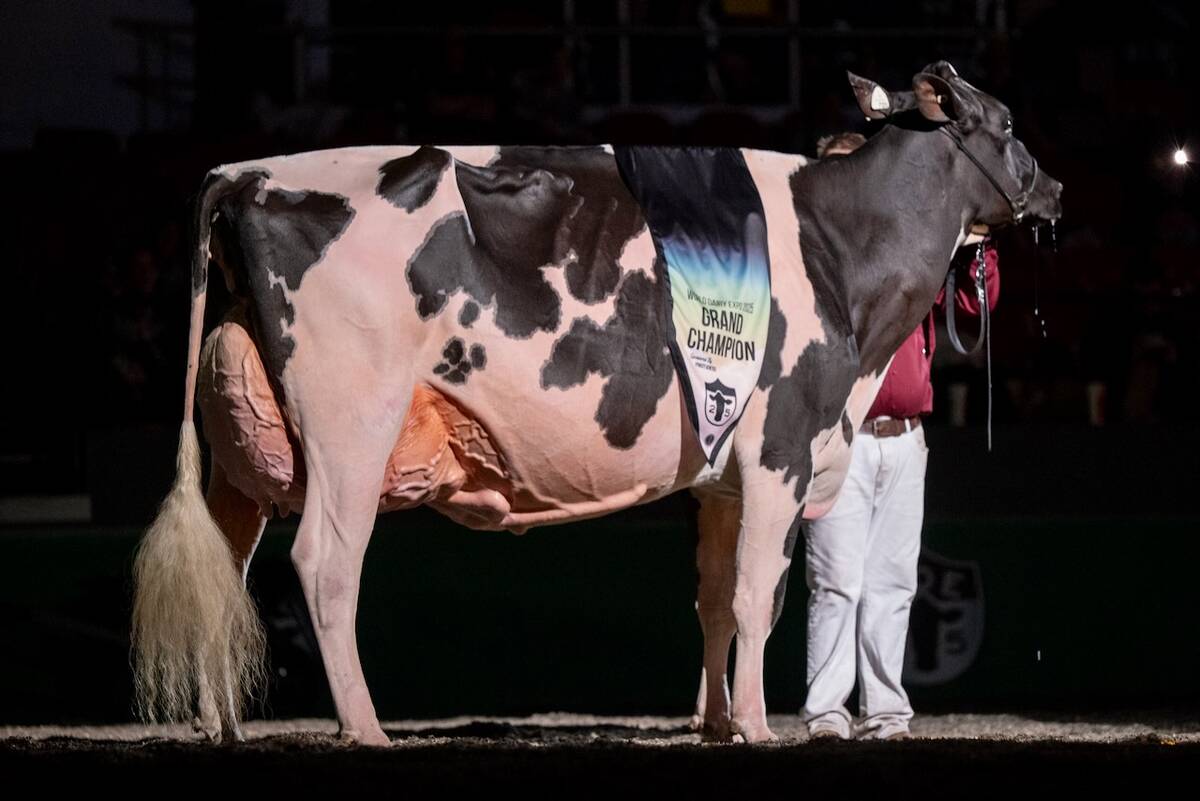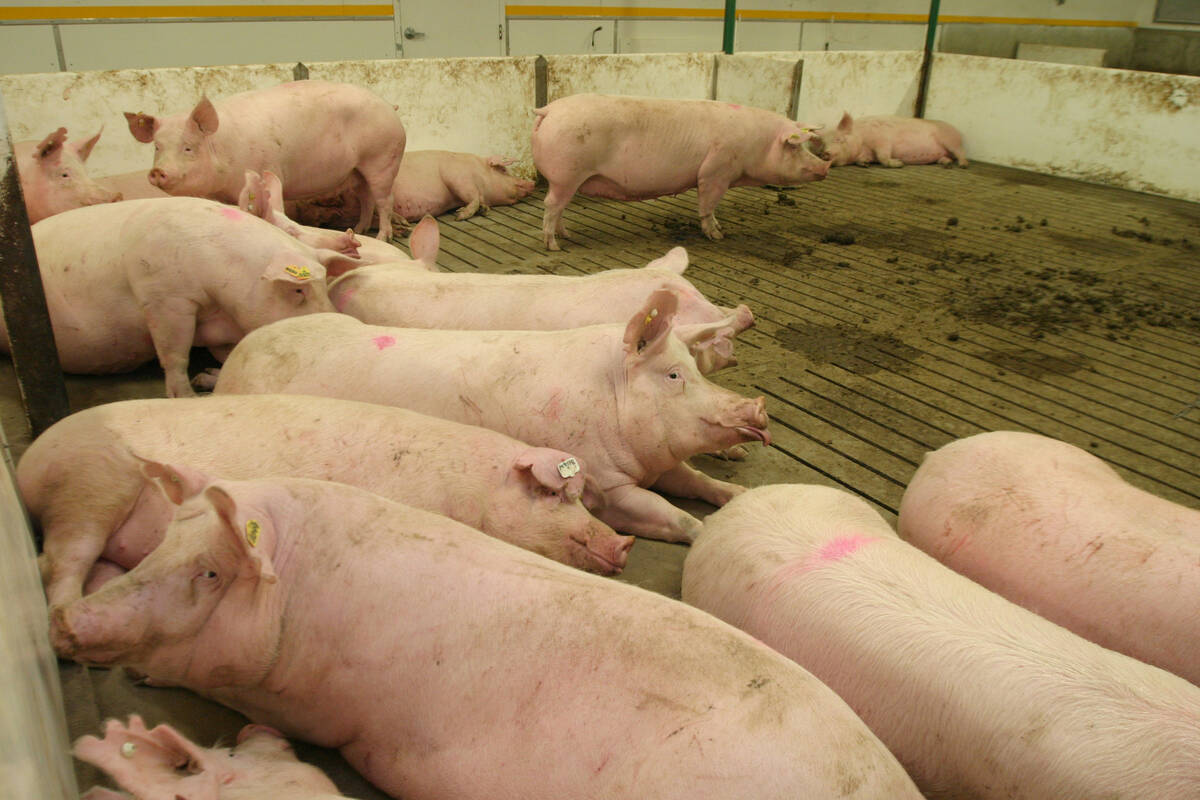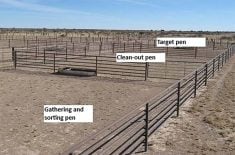Farmers, industry stakeholders and consumers care deeply about animal welfare.
Since 2005, the National Farmed Animal Care Council has managed the codes of practice development process for a variety of animals, including bison, dairy cattle, hogs, farmed fox and mink, goats, rabbits, veal cattle and poultry.
The NFACC brings together a diverse group of people, including commodity associations, animal welfare organizations, retail and food service businesses, meat processors, veterinarians and government.
Read Also

Canadian-bred cow wins World Dairy Expo Holstein show
A cow bred in Saskatchewan, Lovhill Sidekick Kandy Cane, is the Grand Champion Holstein at the 2025 World Dairy Expo.
My scope of practice is limited to pigs, and I will mainly focus on the welfare code for swine.
The current pig code, which was released in 2014, encompasses many different areas of pig husbandry, care and welfare, being divided into sections:
- housing and handling facilities
- feed and water
- animal health
- husbandry practices
- transportation
- euthanasia
As outlined on its website, the NFACC uses a transparent process of science, collaboration and consensus, including input from a scientific review committee on priority welfare issues, to develop a code that will meet the standard of care for pigs in Canada.
Required practices have been based on regulatory or industry-accepted requirements and are directly linked to welfare. They are applicable to the wide range of farms across Canada.
Regardless of the size of the operation, age or market the farm sells animals into, the required standard of care to meet is the same for everyone.
The science of animal welfare continues to build over time. Public and consumer expectations on how animals are kept and raised on farms does shift.
To keep up with the increasing body of animal behaviour and welfare research, technology, farm practices and market pressures, the NFACC code process does require a review every five years and updating every 10 years to remain relevant.
For example, the 2014 version of the swine code saw a major shift in the requirement for housing infrastructure for sows.
Any new farms built or renovated after 2014 and all sow farms after July 1, 2029, are required to provide open (group) gestation pens for sows after 35 days of pregnancy.
Traditional gestation housing would have sows remain in individual stalls for the entirety of pregnancy.
On the surface, this change appears to be a large leap forward for sow welfare, allowing for sows to engage with cohorts and move around freely.
Like most modern agricultural issues, gestation housing is much more nuanced than one system being better than another.
Group housing leads to aggression by pen mates and challenges body condition management. Farms have needed to adapt husbandry skills and feeding strategies to meet the individual sows’ needs in groups.
In the late 1970s, farms chose to put sows in stalls rather than pens to improve how sows are cared for, fed and managed.
The shift back to pens was directed by consumer pressure, and welfare research focus on this topic allowed for development of technology and strategies for farms to more easily adapt to this new requirement.
After a limited review in 2019 without any consensus for amendments to be made to the code, NFACC recently announced that the swine code will be reviewed again.
The review process does include input from a variety of sources.
The scientific sub-committee, which comprises animal welfare researchers and specialists, will identify three to six priority welfare issues that it considers to be important and would benefit from a review of the available scientific literature.
The code committee will also identify a list of priority welfare issues.
As well, the NFACC allows for public input to identify priorities. At the time of writing this article, a public request for listing welfare priorities is open for comment.
The two committees then come together to reach consensus on a final list of three to six priority welfare issues they consider will particularly benefit from a scientific review.
Once the list of priorities is established, the scientific committee will review the literature for each welfare priority and draft a review of the research focused on the priority issues agreed by consensus of the code committee.
The code committee begins reviewing the existing code and topics not being reviewed by the scientific committee.
After a peer review of the scientific committee report, the code committee is responsible for drafting the code using the scientific committee report.
At this point, the draft version of the code will be open for a 60-day public comment period, and final revisions will then be made before releasing the updated code.
While the process seems long, all steps are necessary to ensure balanced, well-thought-out amendments are kept to guide welfare approaches that have a direct impact on farm management strategies.
Some areas that could get attention and focus might include further enhancing pen enrichment strategies to provide pigs with opportunity to play, further pain management strategies, further definition of space allowance in pens for growing pigs and sows and further definition of fitness for transport. Time will tell.
Using science, common sense and collaboration, we should end up with sustainable pig welfare practices to see us through to the next code revision in 10 years time.















